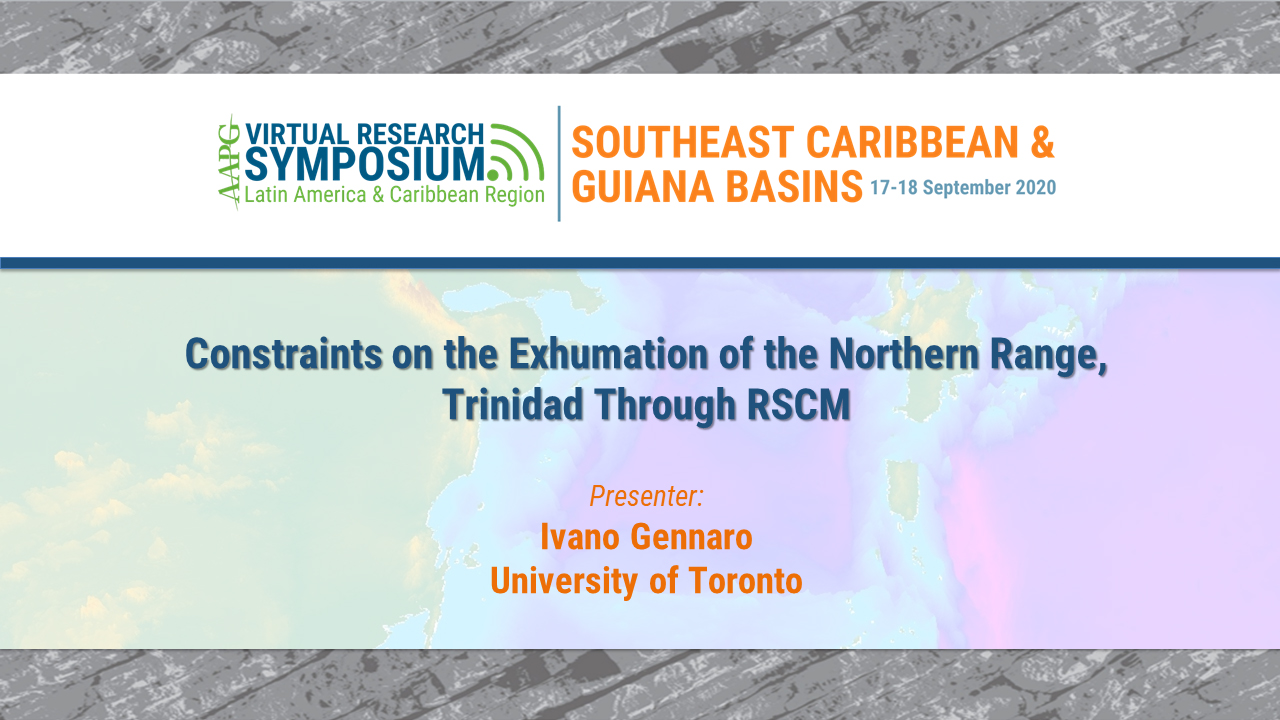
Summary
Author(s): Ivano Gennaro (presenter), Xu Chu, University of Toronto; John Weber, Grand Valley State University; Alberto Vitale Brovarone, Università degli studi di Torino and Institut de Minéralogie, des Physique de Matériaux et de Cosmochimie; Jeannette Arkle, Augustana College
Organic carbon undergoes a transformation from amorphous carbon to crystalline graphite with increasing metamorphic temperature in the irreversible process of graphitization. Raman spectroscopy on carbonaceous material (RSCM) is a geothermometric technique which utilizes the crystallinity of carbonaceous material to determination the peak metamorphic temperature of a sample. In this study, we apply RSCM to the Northern Range of Trinidad, a mountain range composed of Jurassic-Cretaceous passive margin sediments metamorphosed in the Miocene. Previous attempts at characterizing the peak metamorphic conditions of the Northern Range have resolved a presumably continuous metamorphic gradient across the range, the continuity of which has implications on the tectonic evolution of the Northern Range and the southern Caribbean Plate boundary zone. Using RSCM, we determine the gradient to be discrete between the east (~340 °C) and the west (~450 °C), with the Chupara Fault in the central Northern Range accommodating the differential exhumation. By coupling our data with previously published and unpublished thermochronology data, we propose a two-step exhumation path. First, oblique collision between the Caribbean and South American plates caused uplift across the entire Northern Range following peak metamorphism at ~25 Ma. By ~12 Ma, the plate boundary became dominated by strike-slip tectonics, with a subduction transform edge propagator (STEP) fault inducing a wave of uplift and subsidence as it propagated along the boundary. Next, STEP faulting activated the Chupara Fault, which remained active from 12–4 Ma and accounts for the differential uplift seen across the Northern Range. Continued STEP propagation allowed for western subsidence and eastern uplift in modern times.
Bio:
Ivano Gennaro, University of Toronto
Ivano earned a BSc from the University of Toronto, and is currently a MSc candidate at the same university.
Please log in to view or purchase the video presentation